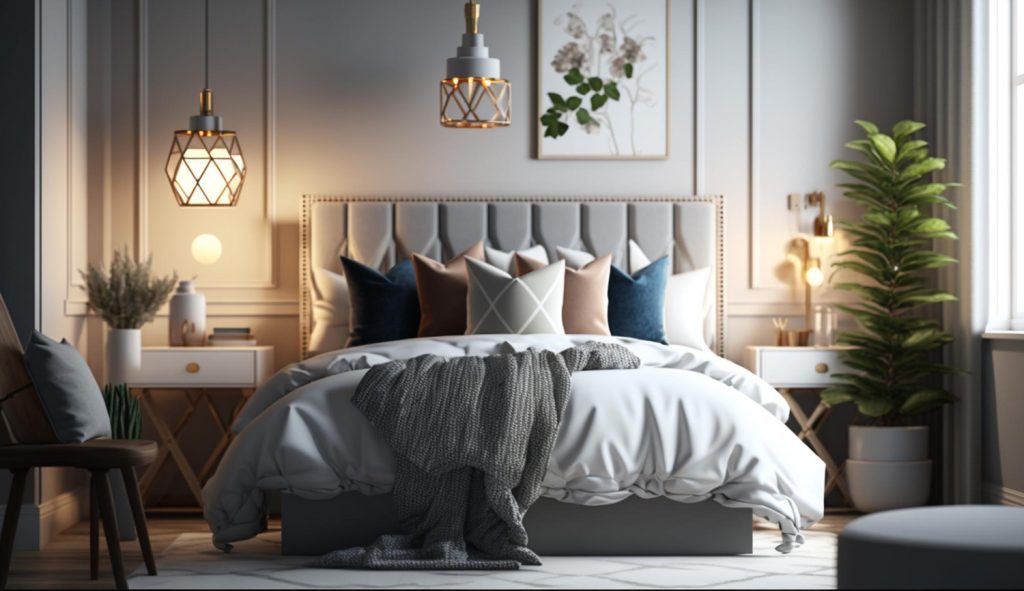
Despite the fact that restful sleep is vital for our health and well-being, many of us struggle to fall asleep at home. However, making small improvements to your living space can have a significant positive impact on both your general health and the quality of your sleep. So, we’ll provide you with some helpful advice for turning your living space into a sanctuary for sound sleep and enhanced health.
Create a Sleep-Friendly Bedroom Environment
The bedroom should be a sanctuary for sleep. Prioritize a comfortable mattress and pillows that support your sleeping position. For a touch of hotel-like luxury, you can check out and buy Actil First Line sheets, renowned for their quality and comfort, to transform your bed into a haven of rest. Dimming the lights an hour before bed can signal your brain that it’s time to wind down.
Consider blackout curtains to block out external light sources and ensure your room is quiet, or use a white noise machine to drown out disruptive sounds. The ideal bedroom temperature for sleep is around 65 degrees Fahrenheit, as a cooler room can help signal your body it’s time to sleep.
Pay Attention to Color and Decor
Colors significantly affect our mood and sleep. Opt for soothing, muted tones like soft blues, greens, and grays to create a calming atmosphere. Avoid bright, stimulating colors in the bedroom. Incorporating plants can improve air quality and bring a sense of tranquility. Choose decor that makes you feel relaxed and peaceful, avoiding clutter and distractions that could cause stress. Besides, personal touches like family photos or favorite artwork can make the space feel more comforting and conducive to relaxation.
Lighting and Its Impact on Sleep
Exposure to natural light during the day helps regulate your sleep-wake cycle. Maximize sunlight in your home by keeping windows clean and curtains open during daylight hours. In the evening, reduce exposure to blue light from screens, as it can disrupt your circadian rhythm. Use warm, dimmable lighting in the evenings to create a relaxing ambiance. In bedrooms, consider installing dimmer switches to easily adjust lighting levels and set the right mood for sleep.
Managing Noise Levels in Your Home
Noise can significantly disrupt sleep and exacerbate sleep disorders. If you live in a noisy area, consider soundproofing your bedroom with thicker curtains or double-glazed windows. White noise machines or apps can mask external sounds. Be mindful of the noise you generate – keeping TV and music volumes low, especially in the evenings, can create a more tranquil home environment. For those in urban areas, investing in high-quality earplugs or noise-canceling headphones can also be an effective solution.
Make Your Temporary Space a Sleep Sanctuary
For those in rented spaces, the choice of a living space can be crucial for sleep quality. Look for apartments with good natural lighting, minimal noise pollution, and adequate space. When renting, you may have limitations on making structural changes, but there are still many ways to improve your sleep environment.
Use portable items like room dividers, white noise machines, and comfortable bedding to personalize your space. The great variety of apartment rentals available means you can choose a place that best suits your sleep needs and health. Also, if possible, consider discussing potential improvements with your landlord, as some might be willing to accommodate requests for minor modifications that can enhance sleep quality.
Adjust Furniture and Layout for Better Sleep
The layout of your bedroom can affect your sleep. Position your bed so it’s facing away from the door or any busy streets. Ensure there’s a clear path in your room to minimize stress and potential accidents if you get up during the night. Choose furniture that promotes relaxation and doesn’t overcrowd the space. Less clutter means fewer distractions and a more peaceful mind at bedtime. Besides, if you select furniture with rounded edges and soft textures, it can enhance the feeling of safety and comfort in the bedroom.
The Role of Technology in the Bedroom
While technology can be a significant distraction, it can also aid in sleep. Consider home gadgets that monitor and improve your sleep environment, like smart thermostats or humidifiers. Be cautious with screens before bedtime as the blue light emitted can interfere with your sleep cycle. If you must use devices, enable night mode or use blue light filters. Establishing a ‘technology-free’ zone in the bedroom or setting a specific time to turn off electronic devices each night can further promote a restful environment.
Modifying your living area to improve sleep quality doesn’t necessitate extensive remodeling. Little changes to the lighting, décor, and way you use your devices in your bedroom can make a major difference. Whether you live in a home of your own or rent an apartment, the first step to improved health and wellness is setting up a sleep-friendly atmosphere.